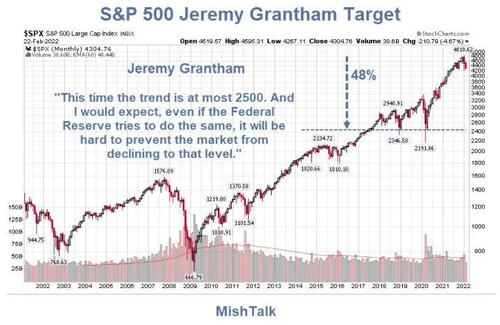NPR (Dustin Jones) reports on the lawsuit, Steele v. ESPN Productions, Inc. (Conn. Super. Ct.):
During Steele’s appearance on former NFL quarterback Jay Cutler’s podcast, which aired Sept. 29, 2021, Cutler asked why she had a Band-Aid on her arm. She explained that she had just gotten her COVID-19 vaccine in compliance with Disney’s corporate mandate, even though she personally felt the company’s requirement to do so was out of line.
“I respect everyone’s decision. I really do. But to mandate it is sick, and it’s scary to me in many ways,” Steele said on the podcast. “But I have a job, a job that I love and, frankly, a job that I need.”
On the topic of race, Steele explained she was proud to come from a family that is both Black and white, the court filing said. As the conversation continued, Steele recalled her 2014 appearance on The View, where she was asked why she didn’t simply identify herself as a Black, similar to Obama. She said she was fascinated that the former president had identified solely as Black despite having been raised by his white mother and grandmother.”
Steele claims that she was “suspended from on-air appearances,” though ESPN denies there was a suspension; she also claims that she was “punish[ed]” by being “remov[ed] from prime assignments, including coverage of the New York City Marathon, the Rose Parade, and the 12th Annual ESPNW Summit, which Steele had hosted and emceed since its inception in 2010,” as well as being “forced to issue a humiliating public apology … and [being] subjected to bullying and harassment by colleagues while ESPN and Disney did nothing to stop it.” She also alleges that she “appeared on the podcast as a private citizen on her day off, and made it clear during the interview that she was speaking on her own behalf, not on behalf of ESPN or Disney.”
My useful correspondent Sammy Straightman asks:
[1.] How come this Sage Steele is suing ESPN for violating her First Amendment rights? I’m well acquainted with the state action doctrine, under which the Bill of Rights only applies to the government (federal, state, or local), not private companies!
So true, Sammy, so true—but only half the picture. Many states (and some cities and counties) have special statutes that limit private employers’ ability to retaliate against their employees based on the employees’ speech or political activity (see my 2012 article canvassing such statutes, which differ widely in their text). Indeed, Connecticut, where ESPN is apparently headquartered and where Steele works, is one such; here’s the relevant statute:
[No employer may] discipline or discharge [an employee] on account of the exercise by such employee of rights guaranteed by the First Amendment …, provided such
activity does not substantially or materially interfere with the employee’s bona fide job performance or the working relationship between the employee and the employer ….
Connecticut courts have also read this statute as borrowing into the statute two First Amendment principles developed by the Supreme Court as to government employee speech: (1) Speech is excluded from this protection if it’s on a matter of merely “private concern.” (2) Speech is excluded and also is unprotected if it’s said by an employee as part of her duties, unless—and here Connecticut precedent departs from federal cases—it involves “comment on official dishonesty, deliberately unconstitutional action, other serious wrongdoing, or threats to health and safety,” in which case it’s protected even if it’s part of her duties.
That’s kind of like religious discrimination, by the way: The Free Exercise Clause and the Equal Protection Clause only apply to the government, but if a private employer fires you because of your religion, it will probably be liable under statutes that apply similar nondiscrimination principles to private employers. (The one difference is that for religious discrimination, you can sue under federal and state statutes; generally speaking, private firing based on speech is barred only by some state and local laws, not federal law.)
This is why, by the way, careful commentators try to distinguish “the First Amendment,” which is a legal rule binding American government entities (as to religion as well as speech), from “free speech” or “religious freedom,” which are broader sets of principles that may apply to others as well. In practice, I realize that people use the terms interchangeably, and that’s normally a tolerable sort of imprecision. But here it’s important both to understand the limits on the scope of the First Amendment, and the fact that there are protections for free speech beyond the First Amendment.
[2.] Wait a sec: How can an employer be required to keep employees whose views it disagrees with, or who are just more trouble than they’re worth?
A perfectly plausible policy argument, and in fact many states take the view that employers shouldn’t be restrained this way. But many other states, including Connecticut, have concluded that employee speech should indeed be protected from such retaliation—again, just as employee religious practice is protected from employer retaliation by federal law (even when the employer or coworkers or customers think this practice is bad).
Part of the reason might be that, if free speech is important for protecting democratic self-government, or the marketplace of ideas, or the search for truth, the threat of private employer retaliation (and not just of government retaliation) may undermine those socially valuable features of free speech. The theory of these private employee protection laws, right or wrong, is that the employers’ private property rights should yield in this situation, as they do with regard to employees’ religious freedom rights (and some other rights).
[3.] OK, but can’t ESPN just say that Steele was saying controversial things, and this “substantially or materially interfere[d] with the employee’s bona fide job performance or the working relationship between the employee and the employer”?
Yes, it can say that; and if the court agrees, then Steele would lose. Under this statute, as under the First Amendment rules applicable to the government as employer (on which this statute is based), a form of “heckler’s veto” is indeed allowed: If coworkers or customers get upset enough about an employee’s speech, the employee can be fired.
But that’s generally a factual question, which is left for the factfinder—a jury, or a judge if the parties choose a bench trial—to decide (at least unless the evidence is so clear that a judge can conclude that any reasonable jury could come to only one conclusion). If it turns out that there was only a modest amount of criticism, then the factfinder may well conclude that the statement didn’t “substantially or materially” affect Steele’s performance or her working relationship with the employer.
Nor do I think that ESPN can say that their employees are always on the job, and always speaking on behalf of ESPN. The premise of the Connecticut statute, and of the government employee speech protections on which it’s based, is that even people who are known to be someone’s employees, and whose credibility stems from their employment, are entitled to speak on their own behalf. Nothing Steele said suggested that she was speaking on behalf of ESPN, and indeed her criticism of ESPN made clear that she wasn’t acting as an ESPN spokeswoman. And of course listeners are used to knowing that often employees are expressing their own personal views, not their employers’.
[4.] What about the requirement of “discipline”—would the alleged suspension from various appearances and assignment qualify?
Not so clear, and I couldn’t find any Connecticut binding appellate precedent on the subject. But here’s a passage from a trial court opinion that other trial courts have cited:
Although in some situations a transfer to a new assignment may not be discipline, where that transfer is to a position that is so objectively undesirable it could be considered a demotion, then such a transfer could be “discipline.” Likewise, a removal of duties is an affirmative act that could be considered a demotion in certain circumstances…. [And a]lthough in a strict sense these acts might be an “omission,” the defendant’s failure to investigate threats made toward the plaintiff and protect him from those wishing to do him harm could be “discipline” because employers generally are supposed to protect employees from threatening or harassing coworkers…. [Section] 31–51q was clearly intended to protect an employee from de facto demotion and retaliatory employer actions that diminish the happiness and status of an employee.
Not squarely on point factually, and in any event not binding precedent, but it should give a sense of the arguments the parties will be making as to “discipline.”
[5.] Wait a sec: What about ESPN’s own First Amendment rights? Doesn’t it have the right to decide whom to select to speak for it on the air, just as the Boy Scouts have a right to decide not to select gays as Assistant Scoutmaster?
Another great question, Sammy! The answer turns out to be unsettled. Nelson v. McClatchy Newspapers, Inc. (Wash. 1997) held, by a 5-4 vote, that the First Amendment allowed a newspaper to require that its reporters not engage in political activity, notwithstanding a state statute that provided, “No employer … may discriminate against an … employee … for … in any way supporting or opposing a candidate, ballot proposition, political party, or political committee.”
On the other hand, Ali v. L.A. Focus Publications (Cal. Ct. App. 2003), rejected the claim that a newspaper “has the unfettered right to terminate an employee for any [outside-the-newspaper] speech or conduct that is inconsistent with the newspaper’s editorial policies,” and allowed plaintiff to go forward with his claim under California’s employee political activity protection statute. And AP v. NLRB (1939) rejected (by a 5-4 vote) the Associated Press’s claim of a right not to hire employees who belonged to unions; the AP’s theory had been that it “must have absolute and unrestricted freedom to employ and to discharge those who, like Watson, edit the news, that there must not be the slightest opportunity for any bias or prejudice personally entertained by an editorial employee to color or to distort what he writes, and that the Associated Press cannot be free to furnish unbiased and impartial news reports unless it is equally free to determine for itself the partiality or bias of editorial employees.”
“The business of the Associated Press is not immune from regulation because it is an agency of the press,” the Court reasoned: “The publisher of a newspaper has no special immunity from the application of general laws. He has no special privilege to invade the rights and liberties of others.” And while Boy Scouts v. Dale does secure the rights of groups that want to spread an ideological message to choose speakers whose conduct or identity doesn’t undermine that message, it’s not clear that this rationale would apply to ESPN, which I think isn’t generally trying to spread any message to the public about vaccination or about racial self-identification. The Court in Dale framed the issue as “whether Dale’s presence as an assistant scoutmaster would significantly burden the Boy Scouts’ desire to not ‘promote homosexual conduct as a legitimate form of behavior'”; it seems unlikely that Steele’s presence in the assignments she mentioned would significantly burden any particular message that ESPN is trying to send.
Moreover, even if Connecticut courts choose to follow Nelson, and allow a defendant to restrict the speech of those who speak for it pursuant to a neutral “no politics” policy, Steele alleges that other ESPN employees were allowed to express their own political views. If that’s true, then it makes it harder for ESPN to rely on Nelson, which had reasoned that:
Here, TNT [The Tacoma News Tribune] implemented a code of ethics which it designed in good faith to foster the newspaper’s integrity and credibility. Case law unambiguously allows a news publication to follow a code designed to limit conflicts of interest which may diminish publication credibility. TNT adopted such a code. Freedom of the press leaves such decisions to the press, not the legislature or the courts. The code is facially designed to uphold the appearance of impartiality.
So an interesting case, I think, which I hope to follow closely.
The post Sage Steele Suing ESPN for Violating Her Free Speech Rights: A Quick Sense of the Law appeared first on Reason.com.
from Latest https://ift.tt/KIF286x
via IFTTT










